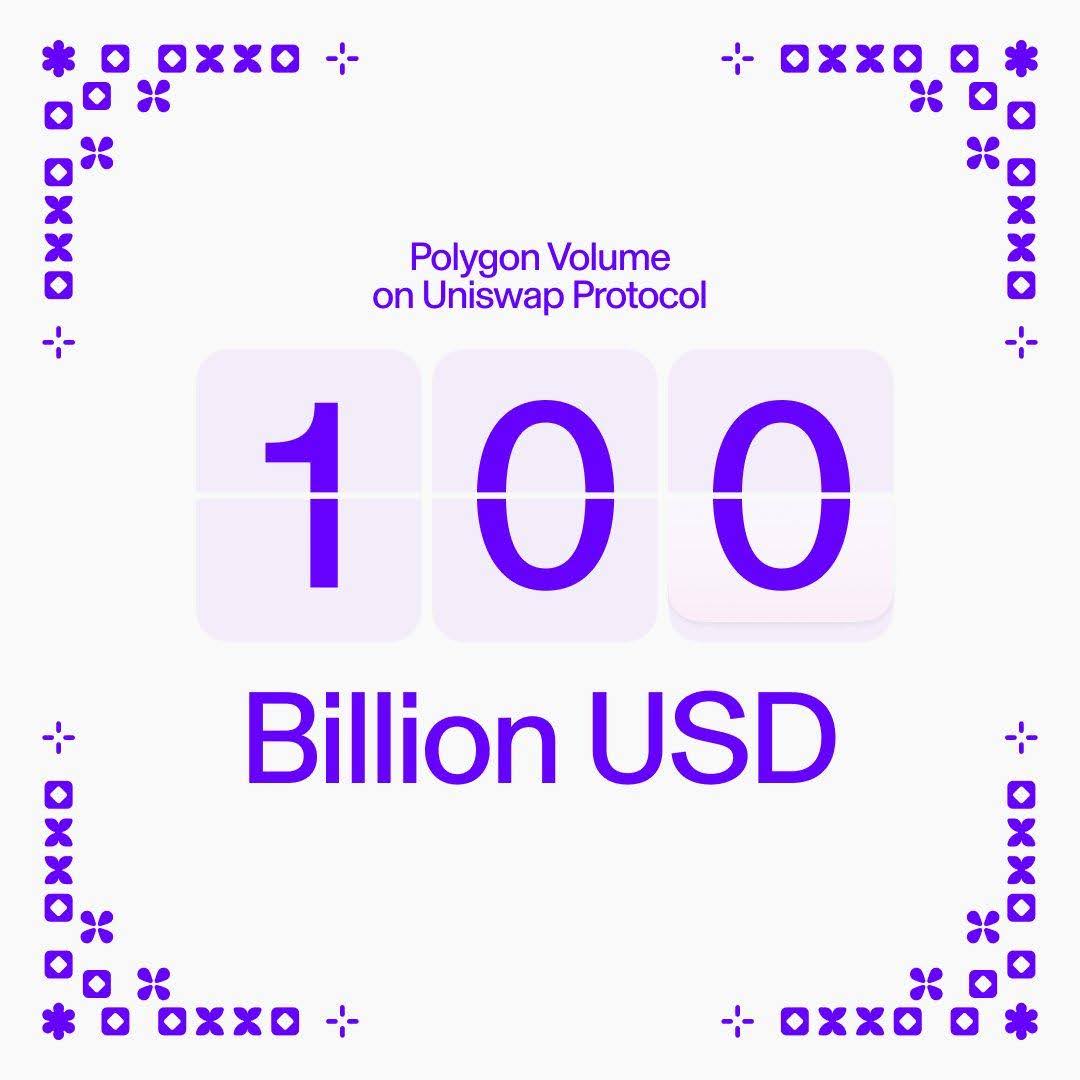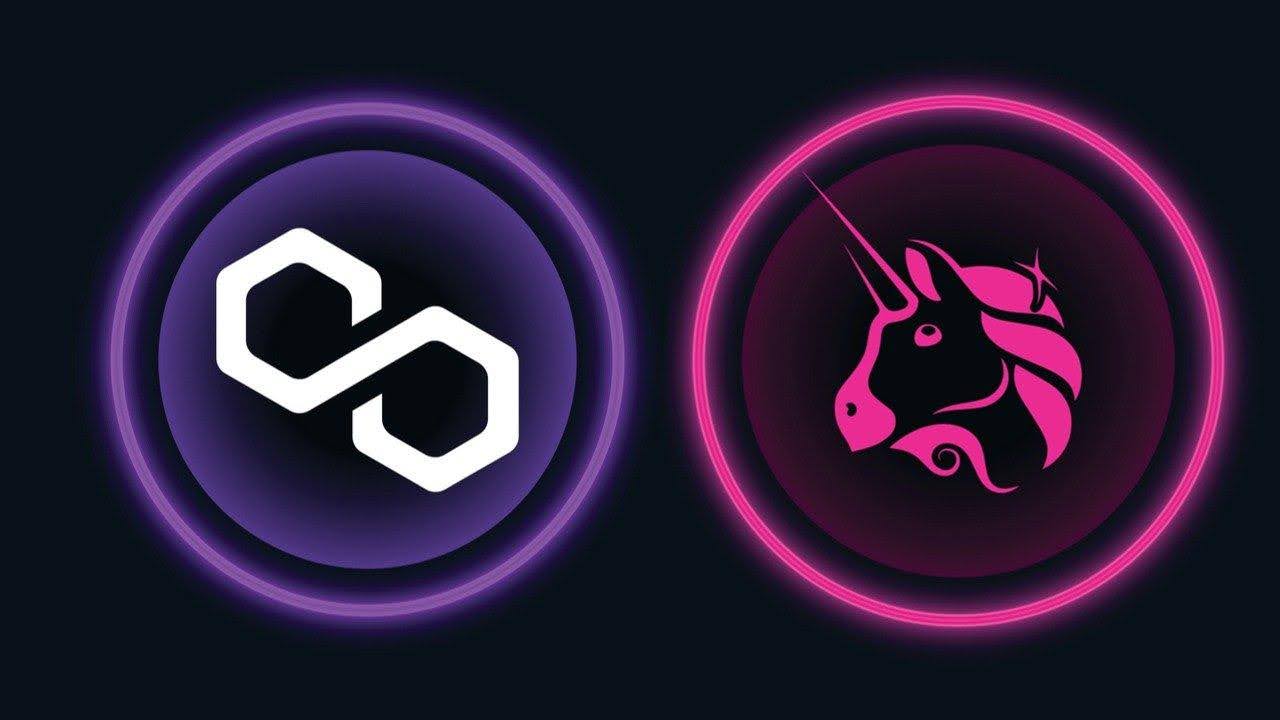$100B Milestone Reached: Polygon Sets New Record on Uniswap, Signals DeFi Momentum
Key Takeaways:
- Polygon surpasses $100 billion in total trading volume on Uniswap, marking a major DeFi achievement.
- The Layer 2 network continues to be a top choice for low-cost, high-speed decentralized trading.
- This milestone signals renewed user confidence in Ethereum scaling solutions and DeFi’s long-term growth.
Polygon has achieved a huge milestone: over $100 billion in total trading volume on the Uniswap protocol. The news, confirmed by both firms on official socials, underscores the network’s remarkable rise in the decentralized finance (DeFi) sector — particularly among budget conscious traders anxious to escape the grind of Ethereum mainnet.

Polygon’s $100B Surge Reflects DeFi’s Ongoing Strength
The $100B mark in trading volume illustrates the tremendous DeFi traction that Polygon’s Layer 2 solutions are attracting. Created to scale Ethereum as well as reduce transaction fees, Polygon has seen widespread implementation as a preferred settlement layer for major decentralized apps such as Uniswap, Aave and Curve.
Uniswap Labs’s own X post celebrated the news with a succinct message:
“Polygon just crossed $100B in all-time volume on the Uniswap Protocol. Purple chain is on the move.”
Polygon echoed the excitement:
“Here’s to $100B USD. The purple chain powers fast, low-cost DeFi on Uniswap.”
This achieves a significant feat as it places Polygon amongst the high performing Layer 2 networks in terms of on-chain activity, and this has specifically been across the Uniswap universe, which is one of the most liquid and most popular decentralized exchange globally.
Why This Matters: Cost, Speed, and Scale
Polygon’s Competitive Edge in DeFi
Low fees and high throughput are part of why Polygon has been adopted. Unlike on the Ethereum mainnet, where gas fees can raise during peak network traffic, Polygon has stable and low transaction costs —often under a few cents per transaction.
Some benefits of leveraging Polygon on Uniswap are:
- Sub-second confirmation times
- Near-zero trading fees
- Access to the same liquidity pools and token standards (ERC-20) as Ethereum
This also makes it an appealing choice for retail and institutional DeFi users who want to:
- Avoid high gas fees
- Trade frequently without capital erosion
- Deploy and experiment with automated trading strategies at scale
Polygon’s integration with Uniswap V3 is a further vote of confidence in its claims of value, as it will allow features like experience concentrated liquidity, personalized fee tiers, and multiple LP positions, along with the benefits of Layer 2 scaling.
Read More: Uniswap Creator Urges Ethereum to Accelerate Layer-2 Scaling Roadmap to Stay Competitive
Data Behind the Milestone
And all of this contributed to the fact that Polygon’s total volume on Uniswap surpassed $100 billion between thousands of trading pairs and millions of transactions, as per Uniswap analytics dashboards and Dune Analytics. This number reflects:
- Increased user activity since early 2023
- Growing participation from global DeFi communities
- The rise of DEX aggregators that route trades through Polygon for lower slippage
By TVL (total value locked) Polygon now ranks in the top five of all Layer 2 chains, with DeFi Llama counting over $1.2 billion in TVL on the network as of early July 2025.
There is a variety of dApps on Polygon too, which has contributed to its growth, including lending protocols and NFT marketplaces, through to prediction markets and perpetuals platforms.

Uniswap’s Role in Layer 2 Adoption
Uniswap expanding to Layer 2s has been a cornerstone in the protocol’s development. Along with Polygon, Uniswap is also live on:
- Optimism
- Arbitrum
- Base
- zkSync Era
Nevertheless, Polygon is one of the most active chains for Uniswap V3 thanks to its early support, wide wallet support (like MetaMask, Coinbase Wallet, and WalletConnect) and strong developer backing from Polygon Labs.
Polygon’s $100B volume line indicates not only user demand, but also about Uniswap’s modular nature — enabling liquidity and trading infrastructure to extend out into a variety of different contexts without losing functionality or trustlessness.
Institutional Interest and Ecosystem Momentum
There’s also an increasing interest in Polygon from institutions, with enterprise adoption in Asia and the Middle East on the rise. Notable recent developments include:
- Partnerships with Flipkart, Adobe, and Franklin Templeton for blockchain integrations
- Ongoing work with Polygon zkEVM, the network’s next-generation scalability stack
- A strong presence in tokenized RWAs, gaming, and Web3 identity solutions
Many of these initiatives use Uniswap infrastructure either directly or indirectly, enabling asset exchange, liquidity sourcing, or on-chain pricing mechanisms.
Institutional participants are looking to slash its operational costs as well as scale transactions throughput, making Polygon’s structure an attractive alternative to the more pricey L1 chains.
The $100 billion mark is largely a symbolic one, but it does further solidify Polygon as one of the leading projects in the race to scale Ethereum. With the zkEVM Mainnet Beta now live and additional upgrades lined up on the roadmap through 2025, Polygon is ready to capture even more market share—especially if Uniswap V4 finds its way integrated natively across more Layer 2 chains.
Read More: Uniswap Integrates with Robinhood, MoonPay, and Transak: Facilitating the Fiat-to-Crypto Bridge
The post $100B Milestone Reached: Polygon Sets New Record on Uniswap, Signals DeFi Momentum appeared first on CryptoNinjas.
CryptoNinjas



















